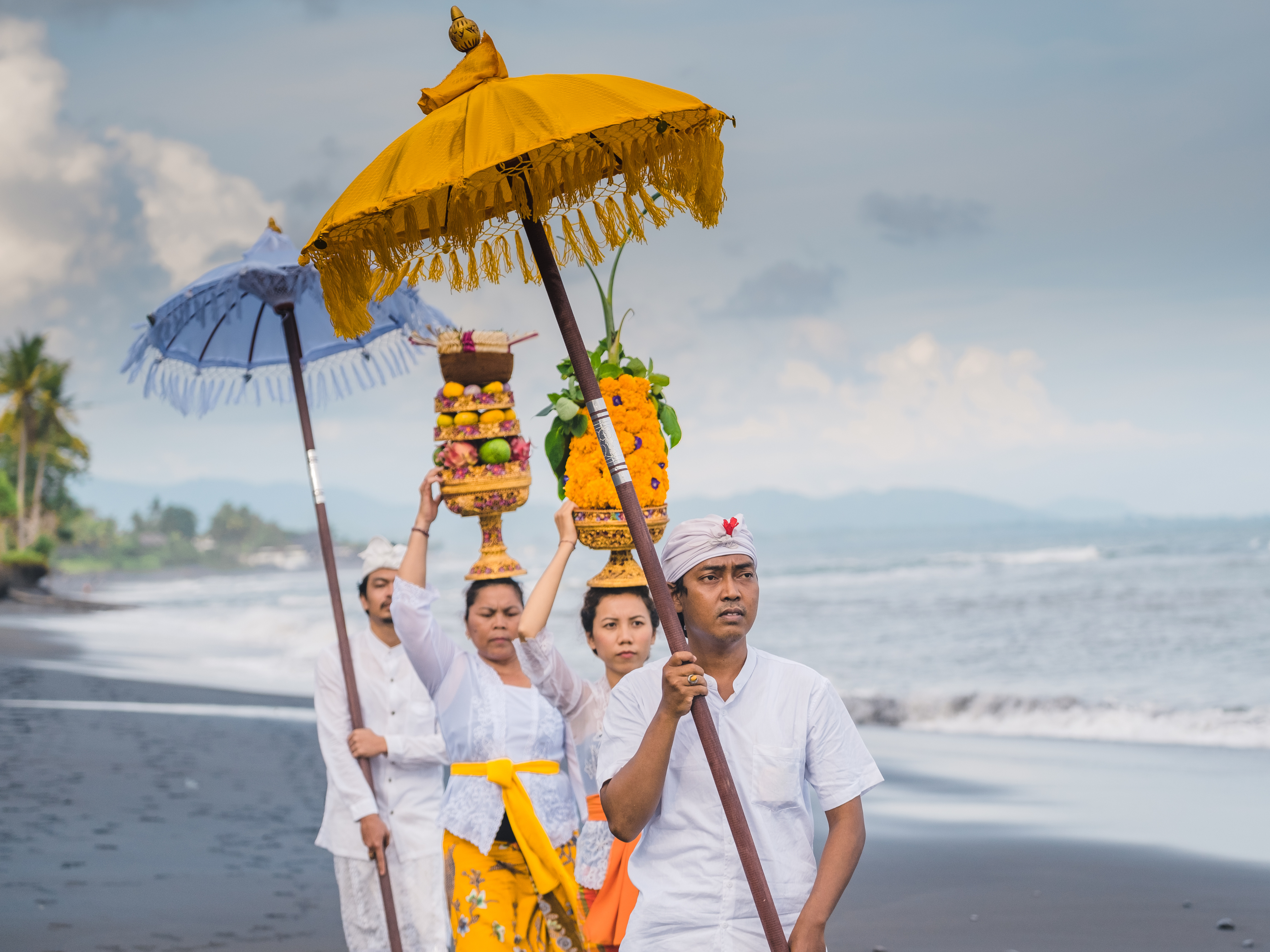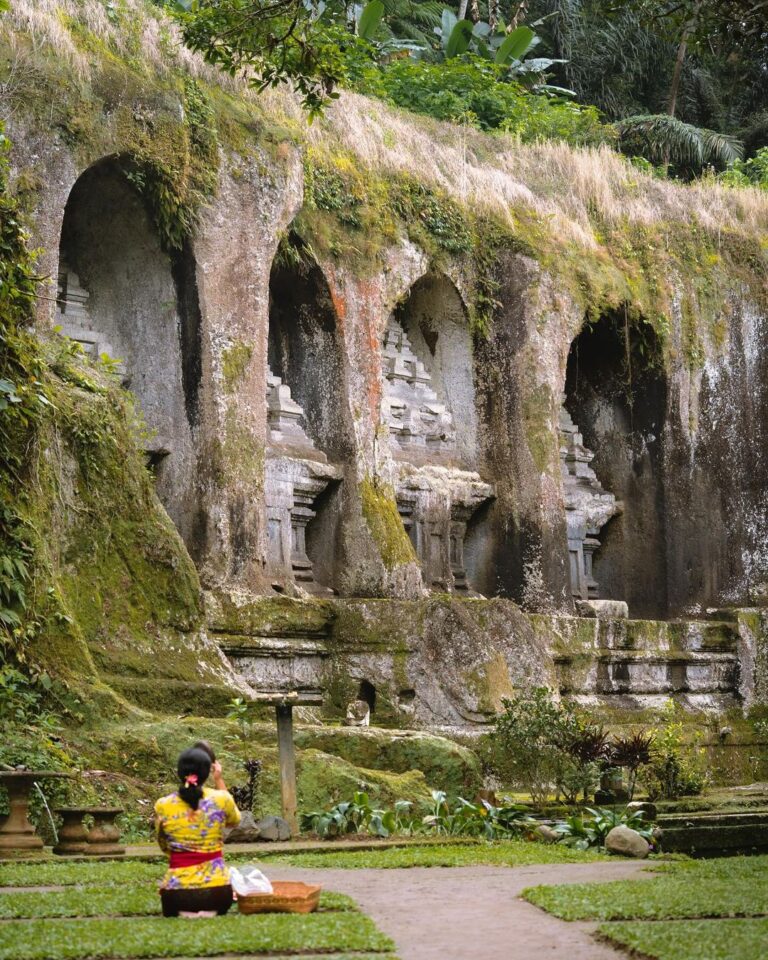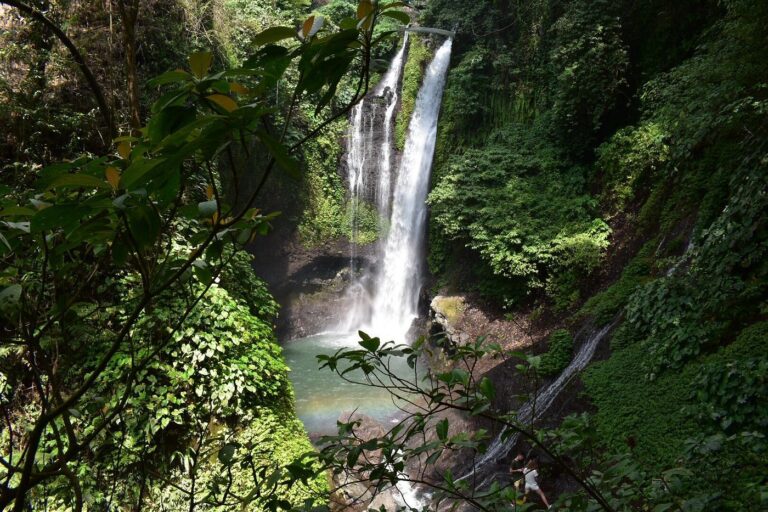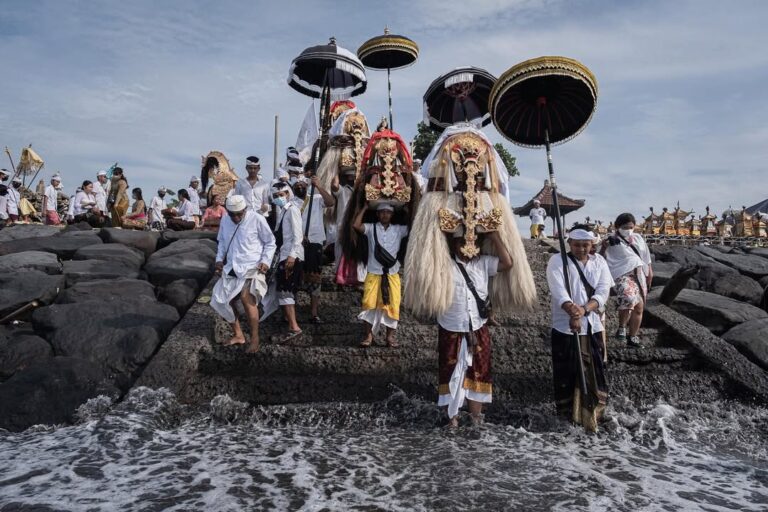As you embark on your exploration of this magical place, you’ll be surrounded by stunning temples, captivating dances, and vibrant offerings.
But to truly understand the heart of Balinese culture, you need to delve into its rich and fascinating mythology.
This unique belief system is a beautiful tapestry woven from ancient Hindu traditions, infused with indigenous animistic beliefs and local legends.
Hinduism is the third-largest religion in Indonesia, based on civil registration data in 2022 from Ministry of Home Affairs, is practised by about 1.69% of the total national population, and almost 87% of the population in Bali Province.
Unlike Hinduism in India, Balinese Hinduism is a living religion, constantly evolving and adapting to the local context. Balinese mythology starts with the eternal dance of creation, preservation, and destruction.

(Photo by : Satrio Ramadhan)
The supreme god Sang Hyang Widhi Wasa, often depicted as formless energy, sets the universe in motion. Through the manifestation of Brahma, the Creator, life is born.
Vishnu, the Preserver, maintains the balance of the cosmos, while Shiva, the Transformer, ensures renewal through cycles of destruction and creation. The battle between good and evil plays a central role in Balinese mythology.
The benevolent deities, like Indra, the god of rain and thunder, and Saraswati, the goddess of knowledge and arts, are constantly challenged by malevolent forces.
Rangda, the ferocious queen of demons, represents these destructive forces, reminding us of the delicate balance in the universe.
Balinese Hindus believe in a strong connection with their ancestors. Elaborate ceremonies are held to honour these spirits, ensuring their continued well-being and seeking their blessings for the living.
This reverence for the past is evident in daily offerings and the intricate family shrines found in many homes. Bali’s pre-Hindu animistic beliefs are still deeply ingrained in the mythology.
The island is believed to be teeming with spirits, both benevolent and malevolent, residing in nature – from towering volcanoes to whispering rice paddies.
Offerings are made to appease these spirits and maintain harmony with the natural world.
Balinese mythology isn’t just a collection of ancient tales; it’s a vibrant part of everyday life. The epic Ramayana, a story of love, duty, and the triumph of good over evil, is depicted in captivating dance performances like the Kecak.
These stories serve as moral compasses and reminders of the interconnectedness of the human and divine realms.

(Photo by : Satrio Ramadhan)
Temples: Gateways to the Divine
Everywhere you turn in Bali, you’ll encounter magnificent temples, each dedicated to specific deities or spirits.
These intricately carved structures serve as portals between the earthly realm and the divine.
The daily offerings, vibrant ceremonies, and the constant flow of devotees illustrate the deep connection Balinese Hindus have with their gods.
Understanding Balinese Hindu mythology allows you to appreciate the island’s culture on a deeper level.
It’s the invisible thread that binds together the breathtaking landscapes, captivating dances, and the warm smiles of the Balinese people.
As you explore this enchanting island, keep these myths and legends in mind.
They’ll unlock a hidden dimension to your Balinese experience, transforming your journey into a captivating exploration of faith, tradition, and the divine.




